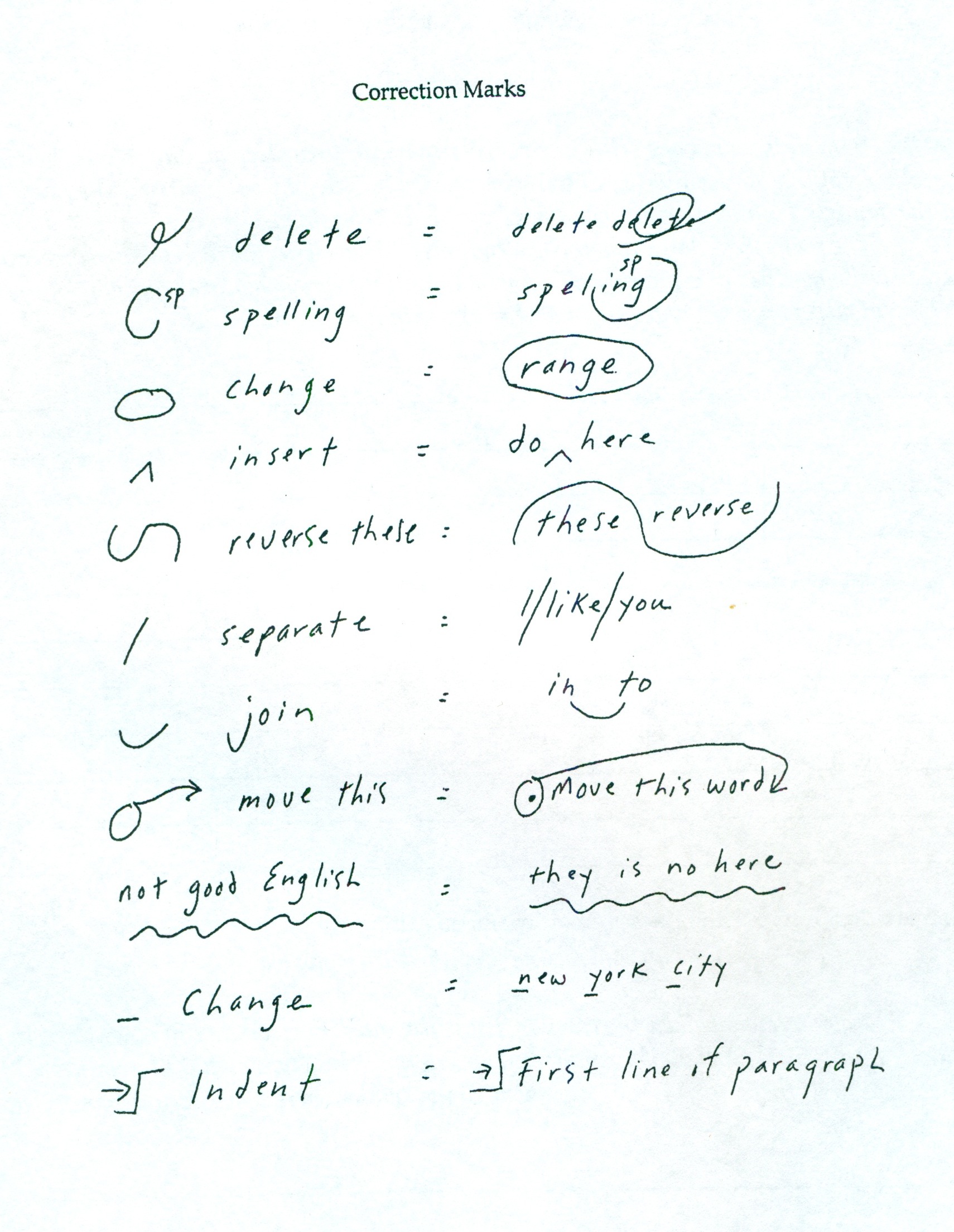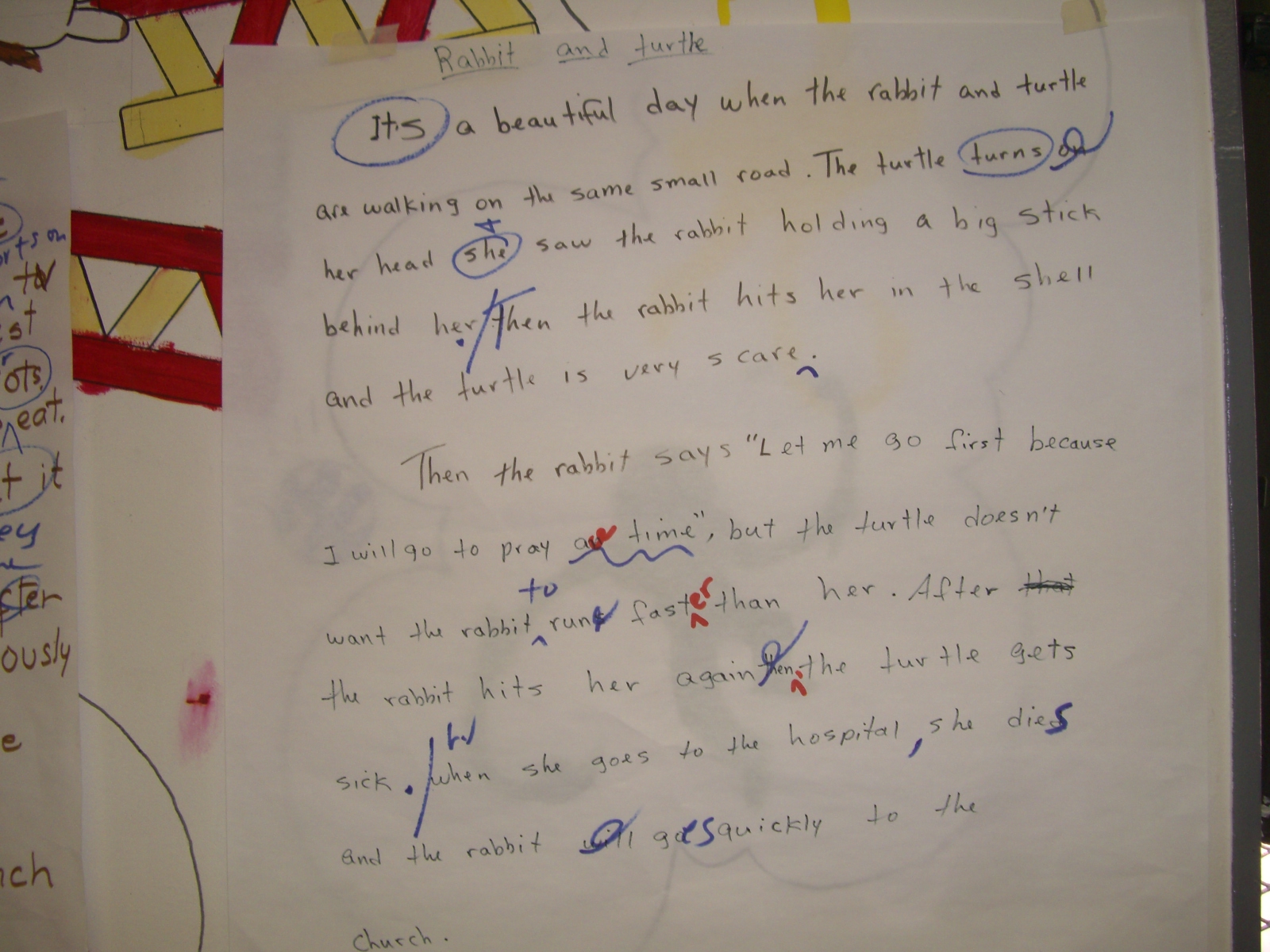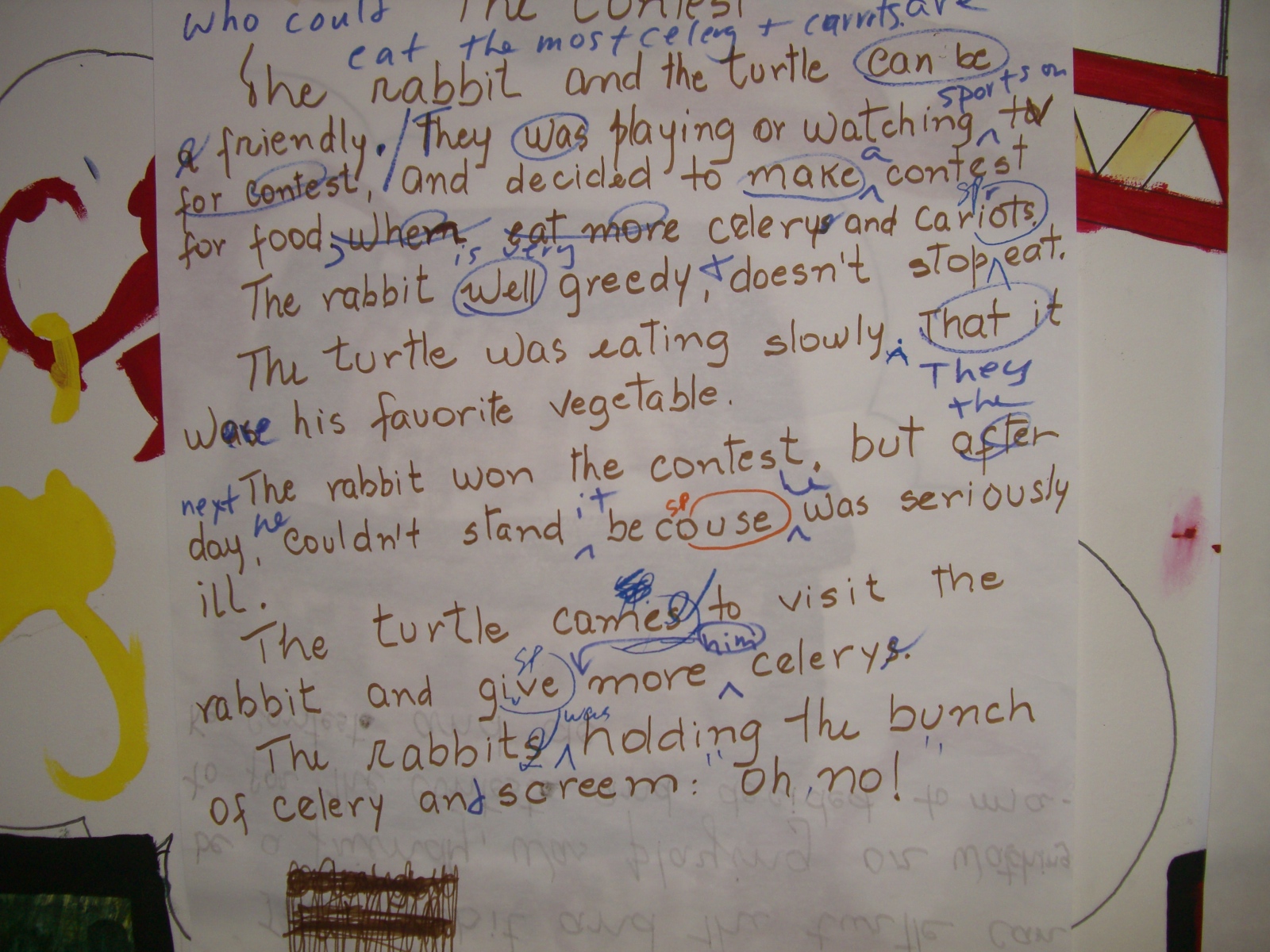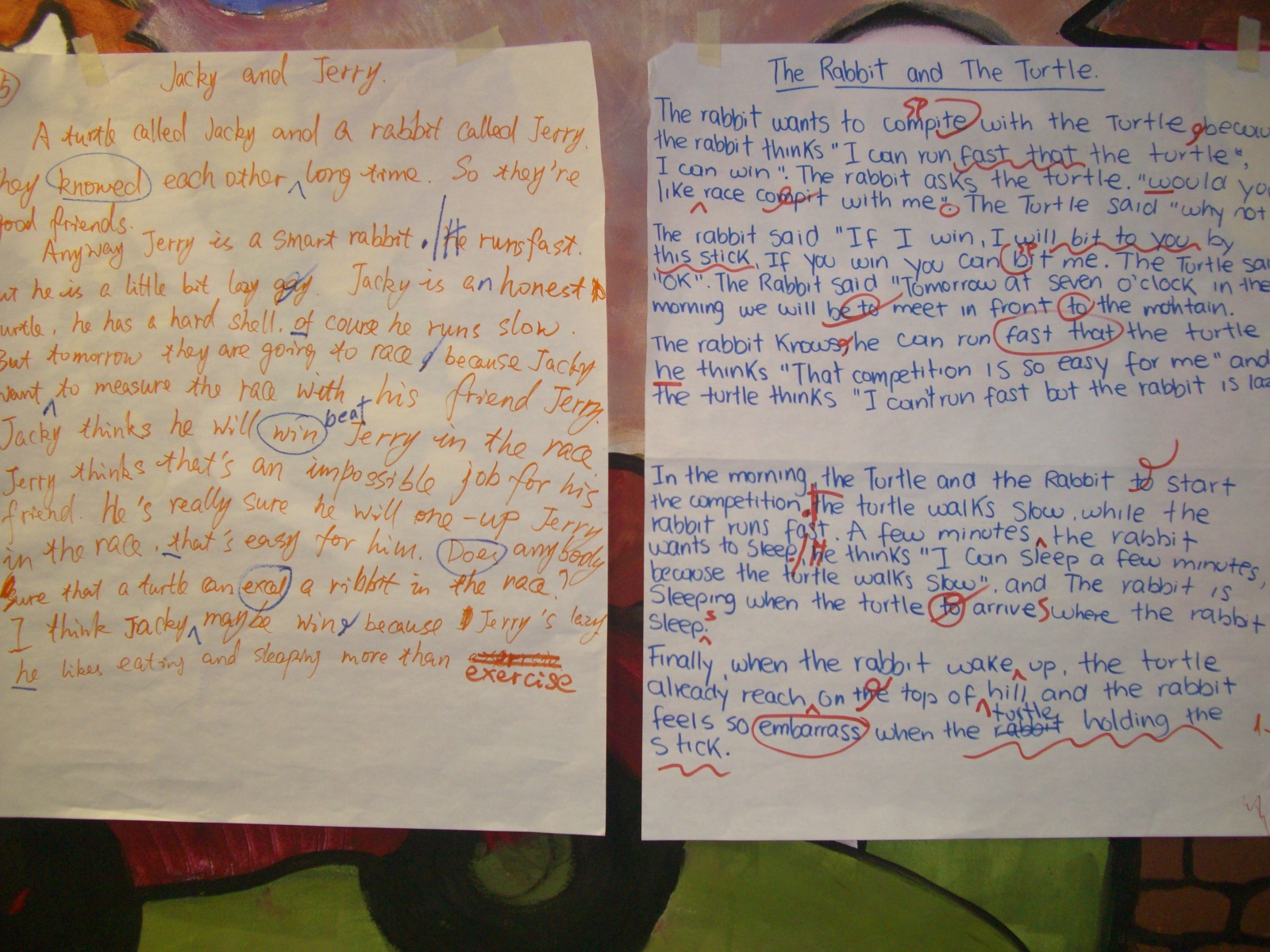…
Introduction:
If we want students to write well, it’s good to emphasize correction marks. When students use them, it helps them to focus on the writing and to think about punctuation and syntax. All correction marks are pretty similar. I’ve borrowed some of mine from Dr. Linda Ann Kunz, who has done excellent lesson plans for beginning ESL students.
…
Writing A Story
Objective:
Using a picture as a prompt, students will work in groups and write a story about what they think is happening. They will also begin to use correction marks correcting each other’s work.
Method:
Teacher talk and direction
Individuals, groups of three
Materials:
Handout: Drawing 2: The Rabbit and the Turtle
Handout: Correction Marks
Newsprint and markers.
Bilingual dictionaries.
Drawing 2 and Correction Marks PDF to download and print:
Picture and Correction Marks
…
…
Progression:
1. Groups of three look at Drawing Two. Tell the groups they are going to work on a story about what they think is happening in the picture and what they think will happen next. It’s not going to be three stories but one story that they discuss and work on together. The verb tense isn’t important, past or present; and they can use the modals (may, might, must, can, could, would, should, and will) to express the future and possibility. Let each group write in whatever tense they feel comfortable writing in. If they are beginners they will be struggling with the simple present. And by all means, students should use bilingual dictionaries to find words that they know in their languages, but not in English.
And by all means, students should use bilingual dictionaries to find words that they know in their languages, but not in English. One of the goals of this exercise is to generate new words and there is nothing like a group effort to do that.
…
…
2. Have groups write their stories on newsprint and hang them up. This should take about an hour, taking time for a first draft on paper and the second draft on newsprint. And make sure they are using bilingual dictionaries to generate new vocabulary.
…
3. Discuss correction marks. You can hand out a copy of the correction marks or write them on the white board for the class to copy down. Explain the marks. Then select a newsprint and correct mistakes using the correction marks explaining them again. The most important thing about a correction mark is that it indicates where a correction is needed so the student knows to think and focus there.
…

…
4. After you have gone over one newsprint with the class using correction marks, have the class get up and walk around correcting. Let the groups work together with one marker between them. After the class has done corrections, lead them in a final correction correcting anything that they’ve missed going to all the all the newsprint until you’re finished.
…
…
The Preceding Three Lessons:
The Rabbit and the Turtle: ESL Lesson One: Similarities and Differences
The Rabbit and the Turtle: ESL Lesson Two: Writing Simple Sentences
The Rabbit and the Turtle: ESL Lesson Three: Discovering Parts of Speech




Wow